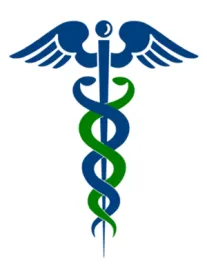The Massachusetts Attorney General and others are currently advocating for legislation that would accord greater legal weight to the findings of an independent state agency, the Health Policy Commission, on the effects of proposed mergers and acquisitions.[1] Currently, a “Cost and Market Impact Review” report is referred to the Attorney General’s Office if the Health Policy Commission determines that a transaction will likely result in a provider gaining a dominant market share, higher prices for services and increased medical spending. Under the legislation, such a report would be prima facie evidence that a transaction violates the Massachusetts Consumer Protection Act and could be used in an action brought by the Attorney General to block the transaction pending the outcome of litigation.
The bill is only one example of recent efforts to enhance state oversight of transactions in the healthcare sector. A Connecticut law that came into effect last year mandates, among other requirements, that healthcare entities provide advance notification to the Attorney General of transactions that result in a “material change” to the business or corporate structure of a group medical practice.[2] The merger, consolidation or other affiliation of a group practice (defined in the law as two or more physicians) with another group practice of eight or more physicians is included as a material change, as is affiliation of a group practice with a hospital or hospital system.
In New York, regulations pertaining to the Certificate of Public Advantage (COPA), which provides a structure for state supervision of collaborative arrangements including clinical integration agreements, also came into effect in 2014.[3] COPA regulations generally purport to use state oversight to minimize the risk of anticompetitive behavior and immunize approved transactions from state and federal antitrust laws.
Such initiatives may be controversial and subject to pushback by other stakeholders and perhaps more notably, the federal antitrust enforcers themselves. For example, an April 22, 2015 letter from the Federal Trade Commission (FTC) to the New York State Department of Public Health expressed concern that New York’s COPA regulations and authorizing legislation “are based on inaccurate premises about the antitrust laws and the value of competition among health care providers”[4] and then objected to three specific provider systems seeking COPA protection. The FTC asserted that because “procompetitive health care collaborations already are permissible under the antitrust laws, the main effect of the COPA regulations is to immunize conduct that would not generate efficiencies and therefore would not pass muster under the antitrust laws.”
At the state level, the Governor of California vetoed a bill in September of last year that would have allowed the Attorney General to enforce and amend conditions imposed on transactions involving a non-profit healthcare facility beyond the powers already granted to the AG under existing California law.
Attorneys General in the last 10 years have been increasingly involved in antitrust oversight of healthcare from actions under existing law. But we now see increased state legislative activity specifically designed to both increase state oversight of healthcare transactions, coupled with explicit efforts, at least in New York, to extend that increased oversight to the creation of immunity to federal antitrust oversight. Both public and private actors are striving (and in some instances struggling) to achieve an appropriate balance between integration and competition as the healthcare system evolves under the Affordable Care Act. While the mechanisms of oversight selected by states differ, as do the circumstances to which they pertain and even whether they are ultimately enacted, these efforts are a reminder that the U.S. Department of Justice and FTC are not the only bodies scrutinizing mergers and other such activity in the sector.
[1] Information about the bill is available in this press release from the Massachusetts Attorney General’s Office.
[2] More information on Connecticut’s new notification requirements is available here.
[3] More information on New York’s COPA law and regulations is available here.
[4] The FTC letter is available here.
Rachel Landauer is co-author of this article.



 />i
/>i

